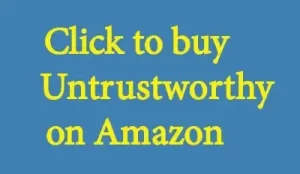What Are The Best Lengths for Social Media Posts?
Best Lengths for social posts can seem elusive. What’s right? Does it ever change?
The fine folks at Buffer and, in particular, Kevan Lee, have done it again and have everything you always wanted to know about social post lengths but were afraid to ask.
In my travels online, I have seen blog posts that were under 50 words long. I have seen blog posts that were a good 10,000 words long. Tweets, of course, are limited. But there have been plenty of Pinterest pins with just an image and nothing else. Or they’ve got enough verbiage behind them to seemingly rival War and Peace. So, what’s ideal? Is there any science behind it?
Blogs
How long should blog posts be? Buffer likes blog post titles to be six words long (oops, this blog post’s title is too long). Interestingly enough, the blog post where I got the inspiration for this blog post from also has a title that is too long.
Sometimes, six words is just not long enough.
Thanks to Buffer for this graphic.
Interestingly enough, Buffer said blog posts are best at 1,600 words in length.
However, Yoast (the fine makers of an SEO plugin I use for my own blog posting–as do many other people!) provides good SEO credit for blog posts that are at least 300 words in length.
The two are not necessarily mutually exclusive, but one thing is for sure – those fifty-word blog posts just plain are not long enough.
How big should a Facebook post be? Buffer said forty characters.
Keep it short, snappy, and to the point. According to Lee, Facebook posts that exceed forty characters degrade in engagement as they get longer.
Not to put too fine a point on it, but that 700-word screed you wrote? Better make that a blog post instead and just link to it. But if you put the whole thing on Facebook, people will scroll right on by. Yes, even if you add an image.
Here’s a trick to get around the forty-character wall – links show the title and some text, and you can always change these.
Or add an image with some text. But don’t go nuts! It is very, very easy to hit and exceed critical mass.
Best Lengths for LinkedIn Posts
How long should a LinkedIn post be? Buffer clocks in at twenty-five words, based upon clickthrough data.
How large should a Pinterest image be?
Buffer’s got you covered – 735px x 1102px. These taller pins seem to stand out more, and are therefore shared more often.
Best Lengths for Twitter Posts
How long should an effective Tweet be? Buffer said to limit it to 71 – 100 characters, in order to provide some space for people to comment before sending out a modified tweet (MT).
So keep hashtags at six characters for maximal impact. Yes, we all know that people sometimes use hashtags as a bit of wry commentary.
Tumblr in particular seems to inspire hashtags like #DudeLooksLikeALady (and not just for fans of Aerosmith). Excessive hashtagging is one of the characteristics of Instagram. However, the best length hashtag on Twitter has six characters.
Best Lengths for Posts: Takeaways
TL; DR – Check out the chart, and the cited article, for more information. The research on best lengths for posts is sound, and fascinating, and the article was a hell of a find.
Is it still relevant, years later? Eh, kind of. You make the call, sports fans.
The best lengths for social media posts keep changing. But there’s one constant in life—cut to the chase!
Want More About Social Media?
If my experiences with non-platform-specific social media resonate with you, then check out my other articles about navigating our social media obsessed world.
Social Media in Our Society
† Social Media Continues its Relentless Pace
• Social Media’s Seduction AKA Oops, Did I Do That?
† Social Media Background Check Being Used For Jury Selection
• Social Media: Hope, Hype or What?
† Social Media Balance
• How Social Media Can Ruin Your Life
† Happy Holidays, Social Media Style
Reviews of Books on Social Media
• Social Media Marketing by Liana Evans, A Book Review
† Book Review – Likeable Social Media by Dave Kerpen
• The Zen of Social Media Marketing by Shama Hyder Kabani, a Book Review
Working with Social Media
† A Day in the Life of a Social Media Marketer
• Five Ways for Charities to use Social Media
† Four Important Social Media Stats
• Social Networking/Social Media Tips
† The Best Lengths for Social Media Posts and More
• Jell-O on the Wall: Social Media Perfection is Fleeting
† When NOT to Post on Social Media Platforms
Social Media for Writers
• The Power of Social Media (Neurotic Writers’ Edition)
† Social Media and Writing
• Social Media and Writing Part 2
† Social Media and Writing Part 3
• Are You Promoting Your Writing With Social Media?






You must be logged in to post a comment.